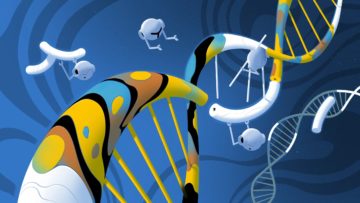Jake Buehler in Quanta Magazine:
 All animals, plants, fungi and protists — which collectively make up the domain of life called eukaryotes — have genomes with a peculiar feature that has puzzled researchers for almost half a century: Their genes are fragmented.
All animals, plants, fungi and protists — which collectively make up the domain of life called eukaryotes — have genomes with a peculiar feature that has puzzled researchers for almost half a century: Their genes are fragmented.
In their DNA, the information about how to make proteins isn’t laid out in long coherent strings of bases. Instead, genes are split into segments, with intervening sequences, or “introns,” spacing out the exons that encode bits of the protein. When eukaryotes express their genes, their cells have to splice out RNA from the introns and stitch together RNA from the exons to reconstruct the recipes for their proteins.
The mystery of why eukaryotes rely on this baroque system deepened with the discovery that the different branches of the eukaryotic family tree varied widely in the abundance of their introns. The genes of yeast, for instance, have very few introns, but those of land plants have many. Introns make up almost 25% of human DNA. How this tremendous, enigmatic variation in intron frequency evolved has stirred debate among scientists for decades.
More here.
